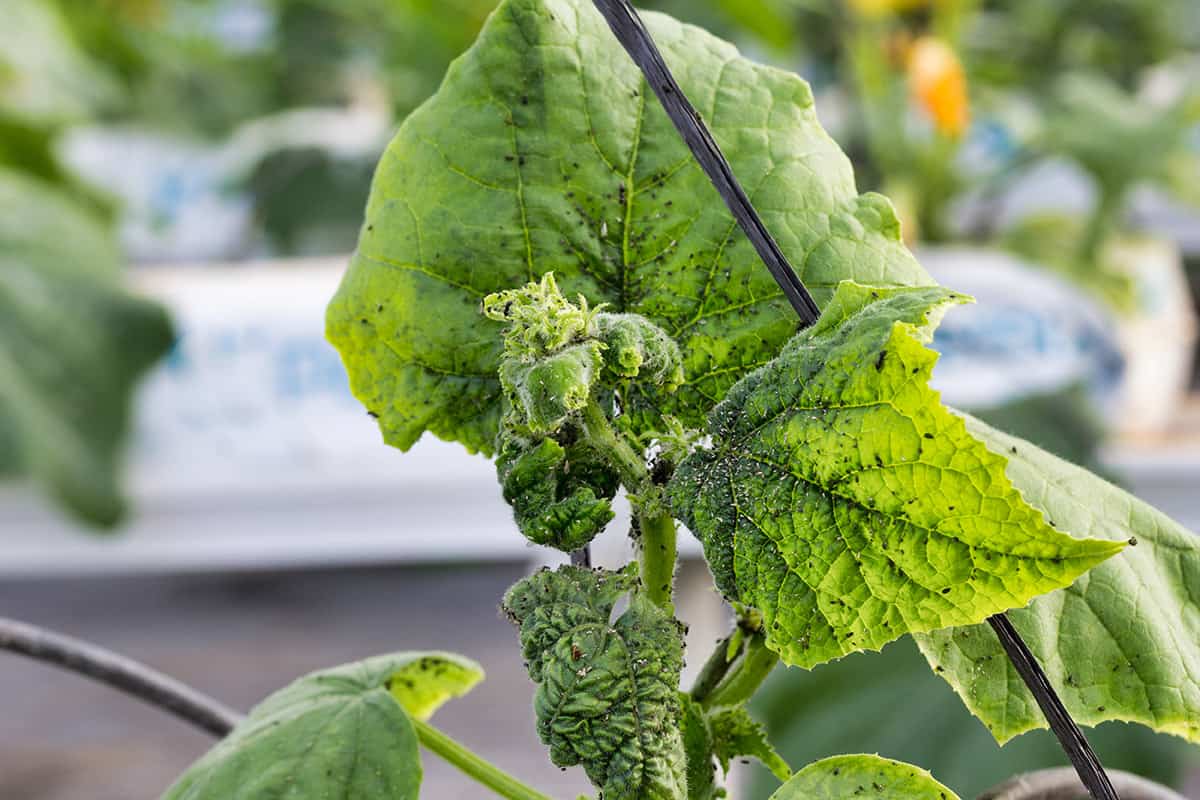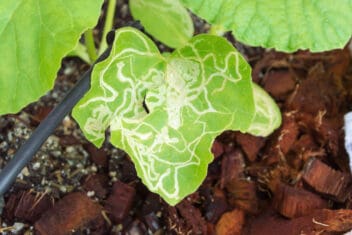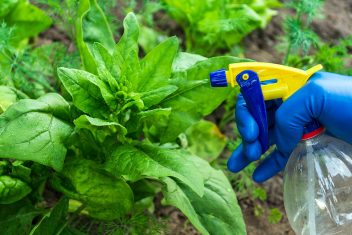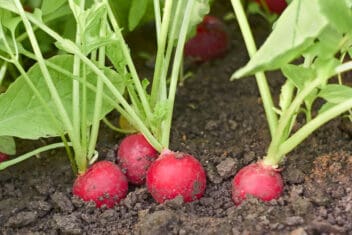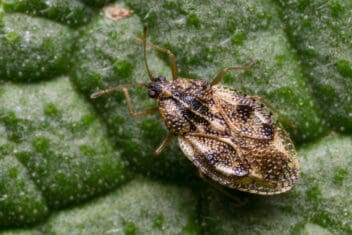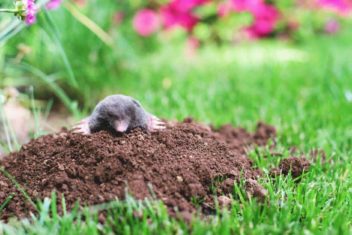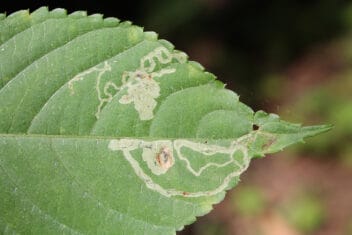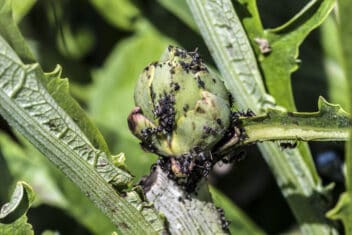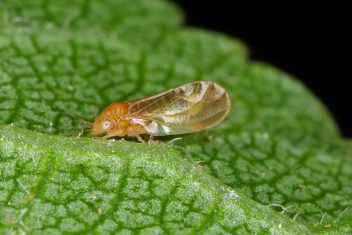Cucumbers are one of the best summer veggie crops because they’re easy to grow, versatile, and delicious. Cucumber plants produce heavy yields, but even the most seasoned gardener may encounter pests, impacting the harvest.
Cucumber pests can cause serious damage to your plants, not only reducing the yield, but potentially killing the plants. That’s why it’s important to know the pests that you might face and how to deal with them.
Here are the most common to keep an eye out for.
The Most Common Cucumber Pests
Here are the most common cucumber pests that you might encounter in your garden.
1. Aphids
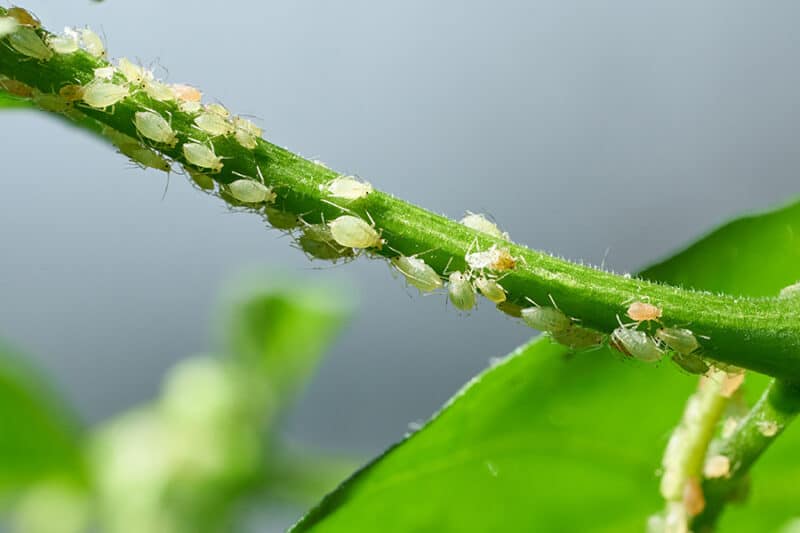
Aphids are small, soft-bodied insects that like to hang out on the underside of the leaves and stems of plants. Most aphids are green or yellow in color, but others are pink, brown, red, or black.
Aphids rarely cause problems in small numbers, but heavy infestations lead to yellow or distorted leaves, necrotic spots on the leaves, or stunted growth.
Aphids also release a sticky, sugary substance called honeydew. This substance attracts ants and encourages sooty mold, which causes a black growth all over your plants.
Dealing with Aphids
Here are some suggestions for dealing with aphids.
- If the plants are sturdy and healthy, spray them with a strong jet of water to knock the aphids off of the leaves.
- Prune away branches and leaves that are heavily infested with aphids.
- Try spreading reflective mulches, such as silver-colored plastic, around the base of your plants to deter aphids from landing and feeding on your plants.
- In extreme circumstances, insecticides are required to treat the problem. Use organic options like insecticidal soap or Neem oil.
2. Cabbage Loopers
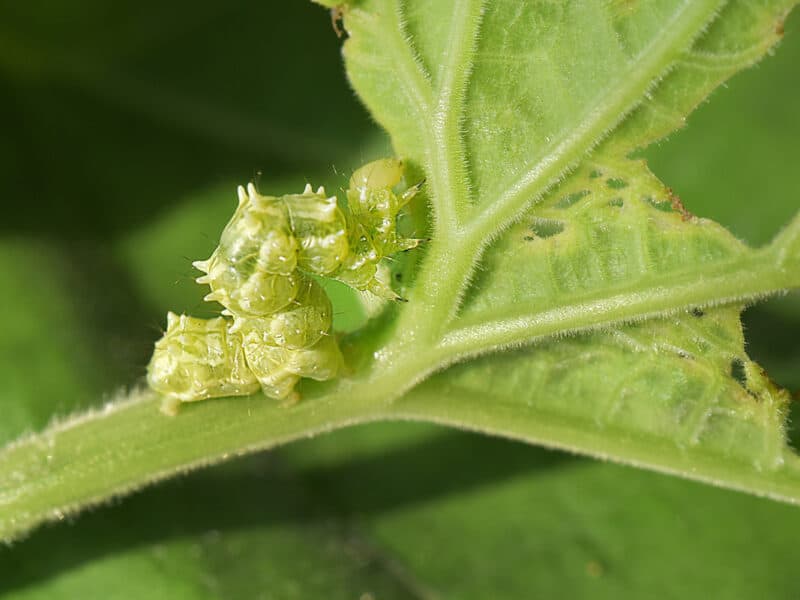
Don’t forget cabbage loopers (Trichoplusia ni) when watching for cucumber pests. Cabbage loopers are small, pale green caterpillars with white lines that run down the sides of their body.
They chew holes in the leaves, and the damage can be extensive. Sometimes you’ll see a few small holes, and sometimes you’ll have extensive damage that will basically destroy leaves.
It’s easy to identify cabbage loopers because they arch their bodies when they move (earning them the nickname inchworm). If you look closely, you’ll find single eggs laid on the leaves rather than in clusters.
Getting Rid of Cabbage Loopers
Cabbage loopers can be hard to control, but here are a few solutions.
- Release beneficial insects and natural enemies, like parasitic wasps, to control the looper population.
- Handpick the eggs and worms from the plant or trim off infested sections.
- Consider applying Bacillus thuringiensis, an organic control method that kills the larvae.
3. Cucumber Beetles
One of the hardest cucumber pests to deal with are cucumber beetles. Depending on where you live, you’ll face one of these two species:
Striped cucumber beetles (Acalymma vittatum)
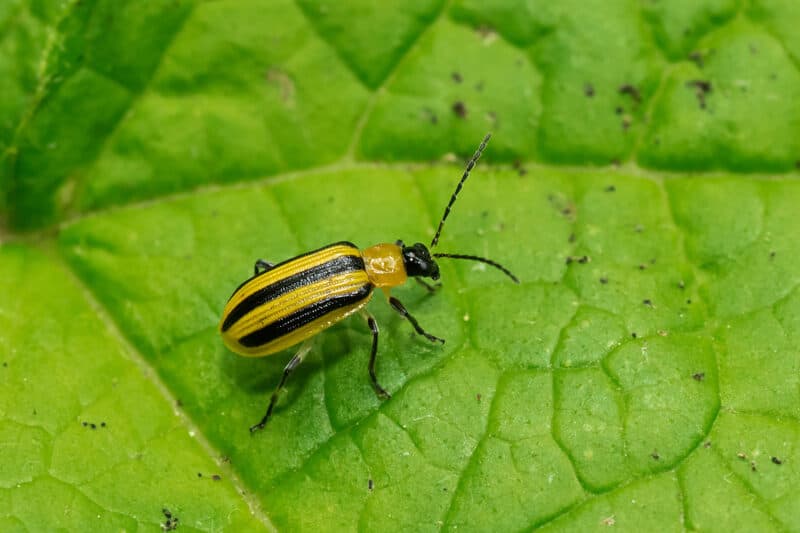
Spotted cucumber beetles (Diabrotica undecimpunctata)
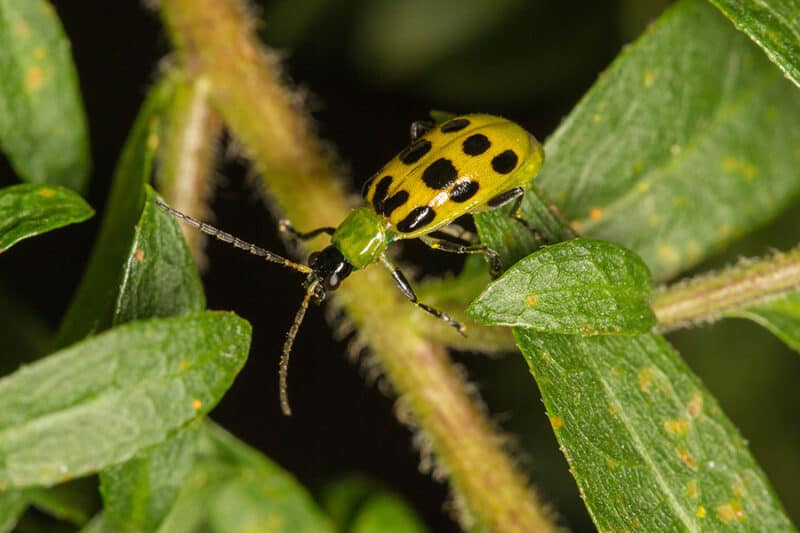
Both of these species feed on cucumber plants, eating holes throughout the leaves and flowers of your plant. The larvae feed on the plant roots.
Cucumber beetles lead to various symptoms and problems, some of which look similar to bacterial wilt. Examples of symptoms caused by cucumber beetles include:
- Stunted seedlings and growth.
- Damaged leaves, stems, or petioles.
- Reduced plant strength.
- Scars on the fruit.
Dealing with Cucumber Beetles
Cucumber beetles are a challenge to handle, but there are a few things you can do.
- Plant beetle-resistant varieties. Two options are ‘Saladin’ and ‘Gemini;’ both of which are excellent.
- Cover the plants with a floating row cover after the seeds germinate until they start to flower. Then, remove it, allowing pollinators to access your plants.
- Trap the beetles with yellow sticky traps. Watch out, though. This method also traps pollinators and beneficial insects.
4. Cutworms
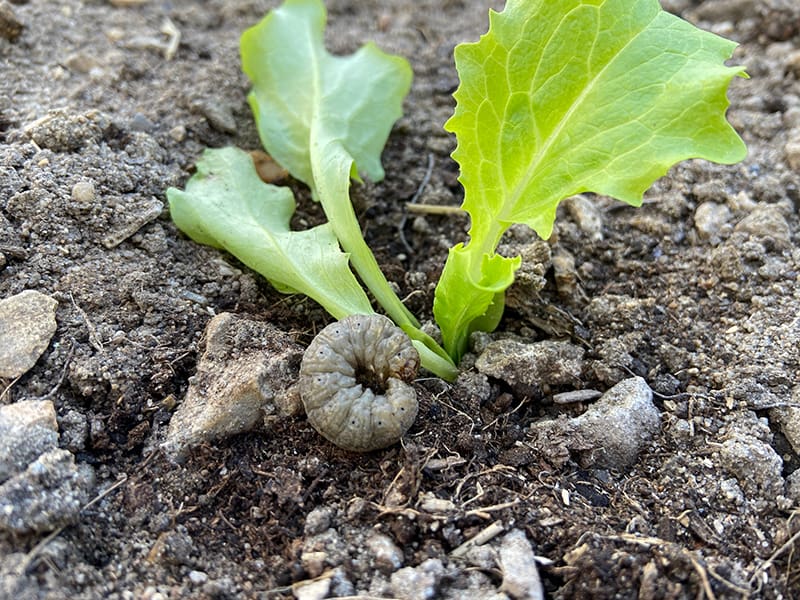
Cutworms destroy the stems of young transplants or seedlings, often severing them at the soil line. At times, cutworms cause irregular holes throughout the surface of the fruits.
Cutworm larvae are active at night and hide during the day, making it hard to spot these pests. They hide in the soil or the plant debris. If you find them, they usually curl into a C-shape when disturbed.
These pests attack a range of vegetables, including cucumbers but not limited to them. Cutworms also infest asparagus, beans, cabbages, carrots, peas, and peppers.
How to Get Rid of Cutworms
Make sure to get rid of all plant debris after harvesting cucumber plants or two weeks before planting. There are a few other things you can do to get rid of cutworms.
- Make a plastic or foil collar that fits around the plant stems that goes three inches into the soil and three inches above the soil.
- Go to your garden at night and handpick the larvae that you find.
- Spread diatomaceous earth around the base of your plant. DE creates a sharp, uncomfortable barrier to crawl over that will cut them.
- In serious infestations, insecticides can be applied to infested areas.
5. Flea Beetles
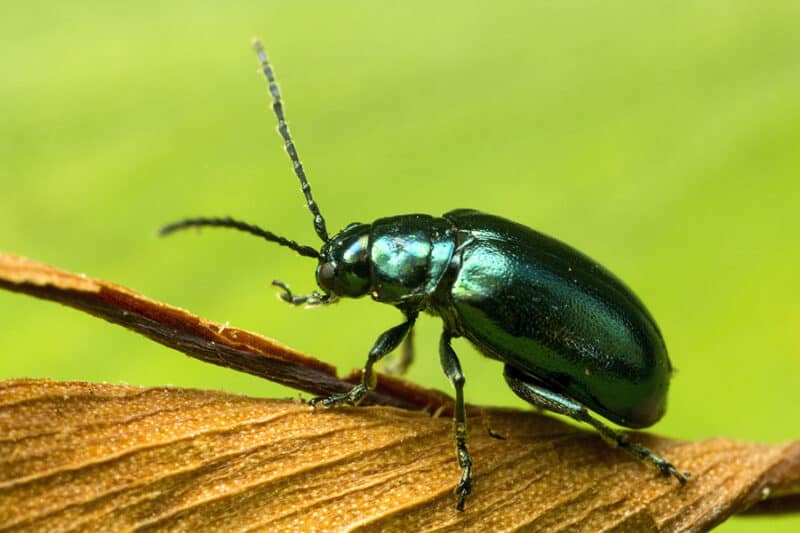
Flea beetles are tiny pests that measure around 1.5 to 3 mm long and are dark in color. They often have a shiny, iridescent carapace. These pests earn their name because they jump like fleas when disturbed, earning the name flea beetles.
Young plants are more vulnerable to flea beetles than mature ones; older plants can usually handle flea beetle infestations.
These pests leave small holes or pits in the leaves, and the damage might cause the plant growth to be reduced. Severe infestations kill plants.
Getting Rid of Flea Beetles
If you face a flea beetle infestation, here are some suggestions to help get rid of them.
- Using floating row covers before the infestation happens can help prevent the emergence of the flea beetles.
- Plant trap crops nearby as a preventative measure; cruciferous plants attract flea beetles the most.
- Apply a layer of mulch under your plants to prevent them from reaching the top of the soil surface.
- Use diatomaceous earth or Neem oil as an effective measure for controlling the population.
6. Slugs & Snails
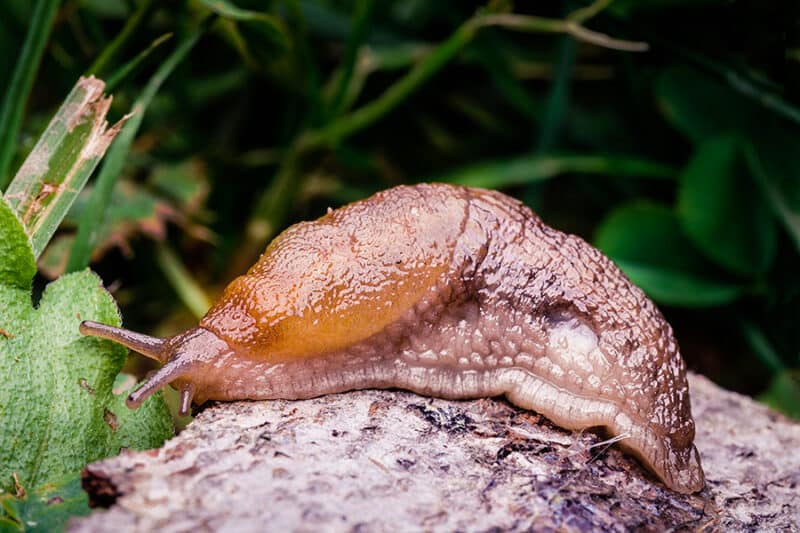
Without a doubt, slugs and snails are a serious problem for gardeners. They devour plants quickly, damaging both veggies and ornamentals.
These pests prefer garden beds that don’t receive enough air circulation or sunlight. Slugs and snails require moist environments to survive, so the best way to keep them out of your garden is to keep the area dry and free of leaf debris.
Dealing with Slugs and Snails
The best way to deal with slugs and snails is to prevent them from coming into your garden in the first place. Here are some suggestions.
- Keep the soil under your cucumber plants dry, allowing it to dry completely before watering again.
- Remove leaf litter that might hold moisture.
- Take off any pests that you find on your cucumber plants and dispose of them.
Check out our guide for more suggestions on preventing and getting rid of slugs and snails.
7. Thrips
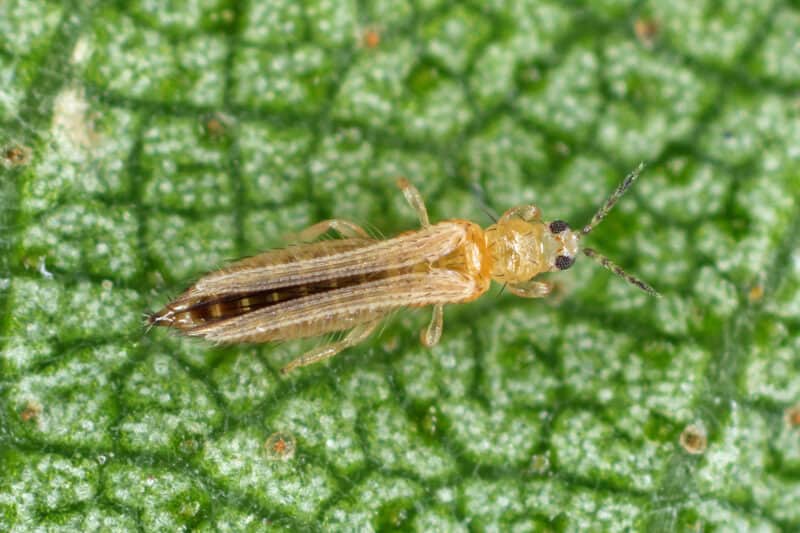
Here is another problem that you might have with cucumber pests: thrips. A big population of thrips leads to distorted, wilted leaves that might have coarse stippling and a silvery appearance. Thrips also leave behind black feces.
Thrips are small, measuring 1.5 mm, so it’s hard to see them with your naked eye. The easiest way to view them is to use a magnifying glass.
Adult thrips are pale yellow to light brown, and the nymphs are even smaller and lighter in color.
Taking Care of Thrips
There are a several things that you can do to take care of a thrip infestation.
- Avoid planting cucumbers near onions and garlic plants because thrips are attracted to those.
- Spread reflective mulches to deter thrips from infesting your plants.
- Huge infestations can be taken care of by using insecticides.
8. Whiteflies
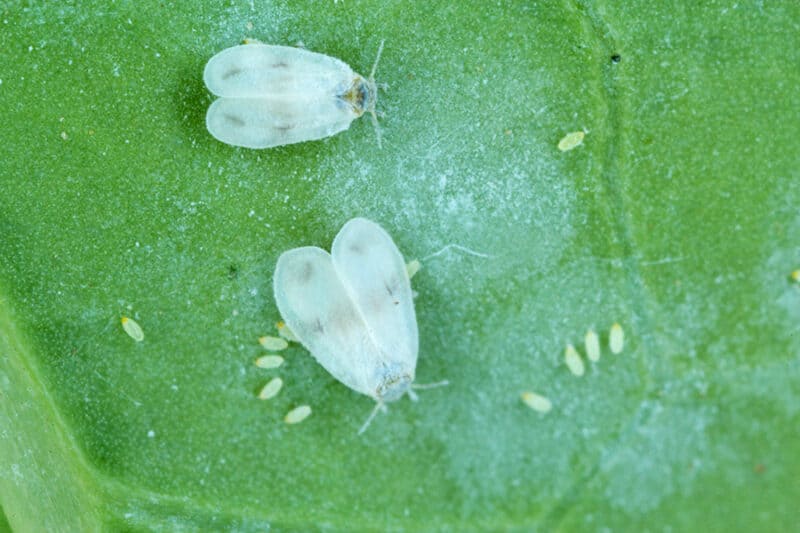
Several species of whiteflies infest cucumber plants; greenhouse and Silverleaf whiteflies cause the most damage. The problem with either species is that they’re so small that you need a hand lens to identify them.
Whiteflies stick to the underside of the leaves, feeding on the sap of the plant. These pests cause plant desiccation, and infested plants lead to a smaller yield.
Handling Whiteflies
The only time you need to use insecticides is when you have significant silverleaf whitefly infestations. Here is what you can do.
- Use floating row covers to avoid whiteflies finding your plants.
- Spread reflective mulches around the base of your plants to keep whiteflies away from your plants.
- Clear out any crop debris and keep your garden beds clean to avoid problems.
